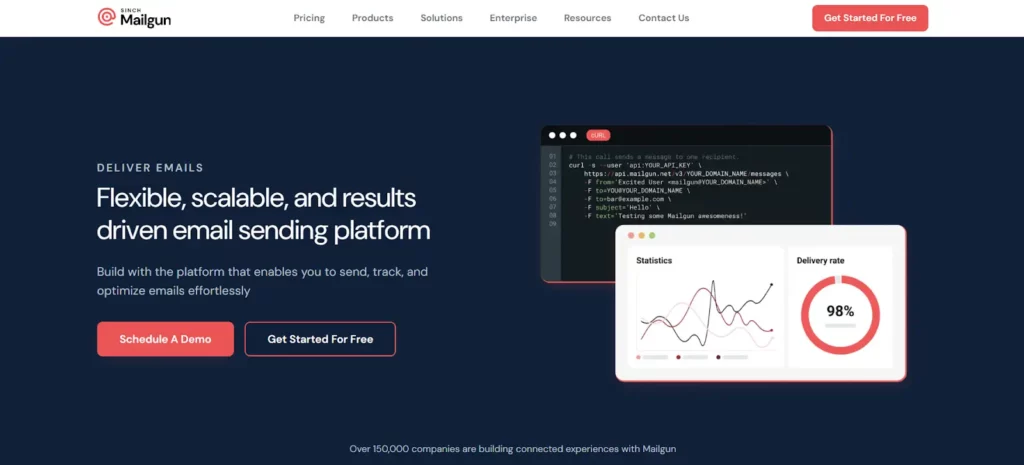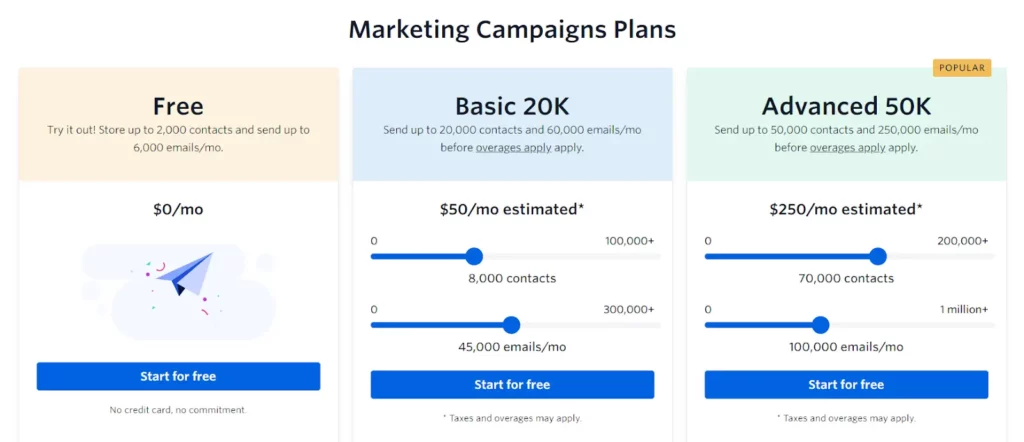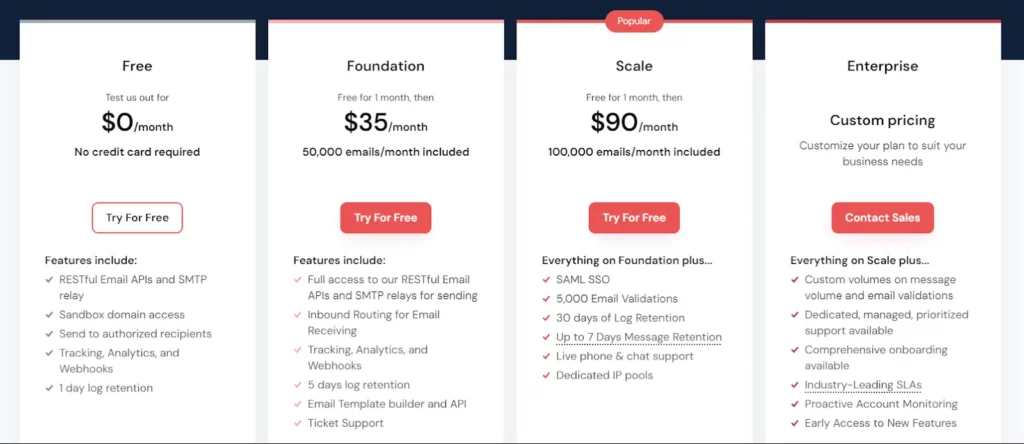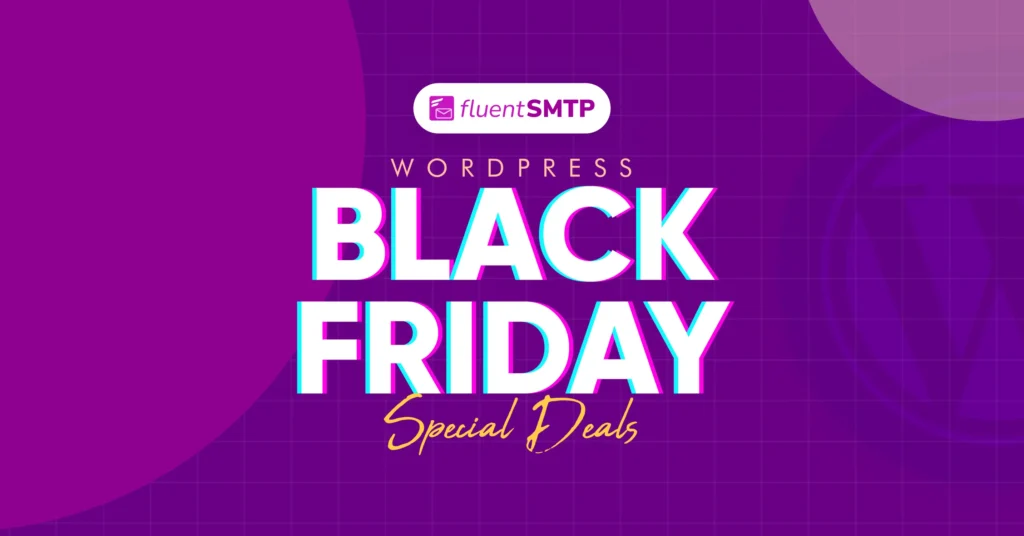
SendGrid vs. Mailgun: A Detailed Comparison
Many websites and email marketing platforms use SMTP services to deliver emails. While most WordPress users rely on third-party email services for their website’s day-to-day email delivery, some people even go beyond the regular email notifications to self-host their email marketing inside WordPress.
Whether you’re just getting started with your website’s email delivery setup or getting into the advancement of email marketing inside WordPress, you’ll likely have a hard time choosing a suitable SMTP service.
Email Service Providers (ESPs) like SendGrid and Mailgun offer specialized SMTP services designed to ensure your emails land right in your customer’s inbox, where they belong. With attractive features and a user-friendly interface, these two transactional email API services offer competitive pricing for all kinds of users.
Looking for guidance on which email SMTP service to choose?
Well, you are in the right place. In this article, we will dive into a detailed comparison between Sendgrid and Mailgun to clear up any confusion you may have.
| Criteria | SendGrid | Mailgun |
|---|---|---|
| Infrastructure | SMTP, Web API (REST) | SMTP, Web API (RESTful) |
| Ease of Setup | Straightforward | Requires Technical Expertise |
| Number of libraries | 7 | 5 |
| In-depth analytics | ✅ | ✅ |
| Dedicated IPs | ✅ | ✅ |
| Email logs | ❌ | ✅ |
| Email validation | ✅ | ✅ |
| Customer support | Ticket, chat, email, and phone | Ticket, chat, email |
| Email templates | A wide variety of options | Limited selection |
| Pricing (50,000 Email) | $19.95/Month | $35/Month |
Before we get into the detailed comparison, let’s take a quick look at Sendgrid and Mailgun.
What is SendGrid?

SendGrid provides libraries for various languages and offers both SMTP relay and API options. It stands out with robust email marketing design and customization tools, making it suitable for both transactional and marketing emails, thus serving as an all-in-one solution.
| Pros | Cons |
|---|---|
| Reliable for email marketing | Design limitations |
| Intuitive user interface | Limited marketing automation |
| Free tier available | Average customer support |
| Inutive user interface | Not so good with Microsoft 365 |
What is MailGun?

Mailgun offers one of the most popular developer-friendly transactional email API services in the world. It has an innovative set of features for sending transactional emails.
Over 225,000 companies rely on Mailgun for their email communication. It boasts Python, Ruby, and PHP libraries, emphasizing its developer-friendly nature. Despite its developer-focused approach, it excels in email validation and enhancing deliverability while remaining user-friendly.
| Pros | Cons |
|---|---|
| Easy to set up | Inconsistent tracking |
| Provides comprehensive and well-documented APIs | Insufficient support |
| Fast throughput and speedy email integration | |
| Supports email marketing |
Detailed Comparison: SendGrid vs. Mailgun
When deciding between Mailgun and SendGrid, two critical factors to consider are their user-friendliness with other tools you’re using. Some other key factors are integrations with other tools, reliability of their service, and pricing.
Let’s break them down!
Ease of Use
SendGrid is generally easy to set up and use. It has an easy-to-navigate interface, making it suitable for both new and seasoned users. SendGrid may become more complex as your email requirements grow, requiring additional configuration and maintenance.
Mailgun targets developers and tech-savvy people. Its strong APIs provide granular control over email delivery. Mailgun offers flexibility if you are comfortable with coding. Mailgun’s technical concentration may make it less intuitive for non-developers.
Integration
SendGrid works easily with various platforms, including marketing automation tools, CRM systems, and e-commerce sites. It integrates effectively with the other tools in your tech stack. While it integrates well, some advanced features may require additional configuration or special programming.
The Mailgun APIs enable you to integrate email functions directly into your apps. It’s perfect for developers looking to create unique email routines. If you are looking for out-of-the-box connectors with specific platforms, Mailgun may require additional specialized work.
Email Deliverability
As we discuss email deliverability for Mailgun and SendGrid, we truly mean, “Will my emails end up in my customer’s inboxes or get lost in the digital void?”
This is vital for any marketer!
Imagine Mailgun as your trusty guide through the email wilderness. They understand the best ways to ensure that your emails reach their intended recipients. Mailgun provides powerful capabilities for avoiding spam filters, as well as extensive reports to track email success.
SendGrid is like a skilled designer for your emails. They not only ensure delivery but also ensure your emails look great on any device (phone, tablet, or computer). SendGrid provides helpful analytics so you can fine-tune your email strategy.
Both offer dedicated IPs for reliable delivery.
Pricing and Plans
Pricing for Mailgun and SendGrid varies based on your usage. If you’re just starting out, both platforms offer free features.
In Mailgun, you get 5,000 free emails per month for five authorized users of your choice. On the other hand, Sendgrid provides 6000 free emails during your initial 30 days, and then you can continue sending 100 emails per day indefinitely without charge.
SendGrid Pricing
SendGrid offers different pricing tiers based on your email volume and requirements. The pricing structure includes both Email API plans and Marketing Campaigns.
Email API Plans:
If you’re running a small business that sends a small volume of emails, the free plan gets you 100 free emails/day. But if you’re scaling up your business, you can move on to the paid plan, which will provide you with more advanced features. The pricing varies based on the number of emails sent per month.
You can send up to 50,000 emails per month for $19.95 and upgrade your plans as you need. It’s also possible to customize the plans according to your needs.

Marketing Campaigns
Pricing depends on the features you need for email marketing. It’s a separate offering from the Email API plans. In the free feature, you can store up to 2000 contacts and send up to 6000 emails per month with access to most features including analytics, API support, and template editing.

If you need to add more contacts and emails you want to send, you can switch your plan to a Basic or Advanced or create your own plan!
Mailgun Pricing:
In the free plan of Mailgun, you can send up to 5000 emails per month to 5 authorized users with 1 day retention.
The Foundation plan starts at $35 per month for 50,000 emails, and the Scale plan costs $90 per month allowing you to send 100,000 emails with additional features (5 to 7-day email retention, ticket support, email template builder API, dedicated IP pools, email validations, etc.).

All the plans support features like RESTful email APIs and SMTP relay, Sendbox domain access, etc.
Both MailGun and SendGrid offer competitive prices in their ‘professional’ tiers however, if you have a tiny website and only send a few transactional emails per day, SendGrid is your best option.
Mailgun, on the other hand, is a better choice for websites that require larger email limits (like online marketplaces).
Final Verdict: SendGrid vs. MailGun
When it comes to SMTP relays, Mailgun and SendGrid can handle large volumes of transactional emails without any hassle. Therefore, the distinction comes down to ease of use and pricing.
If simplicity and ease of use are essential to you, SendGrid may be the best alternative. It’s also a wise choice in terms of price if you have a smaller business. On the other hand, if you demand advanced customization and automation options, Mailgun will be a better option.
Consider your specific needs, technological knowledge, and long-term ambitions to determine which platform is more suited for your organization. If you want to check out other options, don’t forget to check our list of 5 best Transactional Email Services for WordPress.
We wish you all the best!

Ratul Ripon
I enjoy turning complex ideas into simple ones and engage with people through my writing. With a background in Oceanography, I create technical content that’s both easy to understand and interesting.
Table of Content
Subscribe To Get
WordPress Guides, Tips, and Tutorials












Leave a Reply